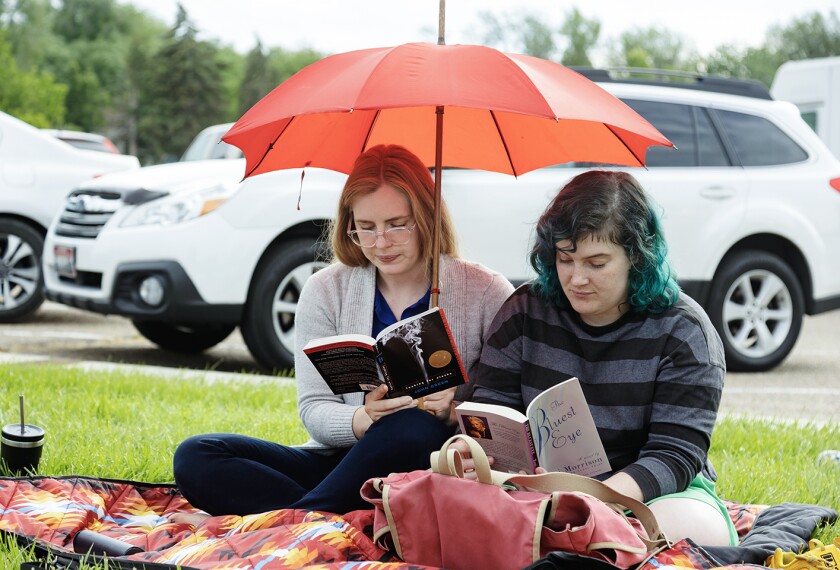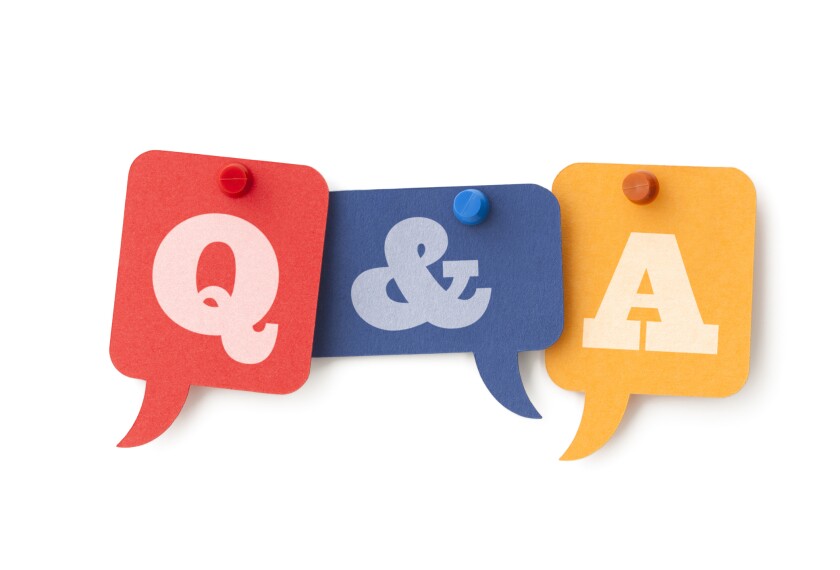If you or anyone you know is struggling with thoughts of self-harm or suicide, help is available. Call or text 988 to reach the confidential National Suicide Prevention Lifeline or check out these resources from the American Foundation for Suicide Prevention.
LGBTQ+ students who go to a school that has at least one policy that aims to restrict the rights of LGBTQ+ students have worse mental health and higher suicide risk than their peers in schools without such policies, a national survey from The Trevor Project shows. However, a significant number of students say they have a supportive adult at school, which, advocates say, is essential for helping LGBTQ+ students stay in school.
The Trevor Project annually surveys LGBTQ+ young people about their mental health. In its new report, released Wednesday, the group surveyed 18,663 LGBTQ+ youth nationally between ages 13 and 24 attending a K-12 school or college. The Trevor Project is a nonprofit organization that provides crisis support, research, and advocacy for LGBTQ+ youth.
LGBTQ+ students have been increasingly the subject of legislation nationally, with several states passing measures dictating how—and when—schools can discuss gender and sexuality, whether parents have to be notified about changes to a student’s name or pronouns, and if students can play sports or use bathrooms that align with their gender identity.
After the significant uptick in such policies in 2022, at least seven states have laws restricting conversations about LGBTQ+ people and issues in school, six require parental notification and the ability to opt-out when LGBTQ+ issues will be discussed in class, and four restrict how “homosexuality” is discussed, according to the study. In the absence of state direction, districts locally have their own various policies on LGBTQ+ matters.
Teen mental health nationally has improved slightly after record high levels of teens reporting mental health challenges in 2021, but more LGBTQ+ students still report experiencing persistent feelings of sadness and hopelessness compared to cisgender and heterosexual peers.
“I think there’s some powerful data there around the ways in which the presence of these policies is clearly impacting the culture of the school, and therefore the safety and the experiences of the LGBTQ students,” said Jonah DeChants, a senior research scientist at The Trevor Project.
Roughly a third of the students enrolled in a school said there was at least one anti-LGBTQ+ policy in place, with young people in the South (34 percent) reporting the highest rates of attending a school with one anti-LGBTQ+ policy, followed by those in the Midwest (29 percent), according to the survey.
About half (44 percent) of those who attended schools with at least one policy targeting LGBTQ+ youth said that they attended school “only sometimes”—compared to 38 percent of LGBTQ+ students who attended schools with no such policies.
LGBTQ+ students who attended a school with at least one anti-LGBTQ+ policy reported more harassment than peers at schools with no policies, including verbal harassment, physical attacks, unwanted sexual contact, discipline when fighting back against harassment, and leaving school due to mistreatment.
Students in schools with restrictive policies reported lower rates of having gender-neutral bathrooms or having educators respect their pronouns.
Meanwhile, LGBTQ+ students reported poorer mental health and higher suicide risk when they went to a school with a policy that aimed to restrict the rights of LGBTQ+ students. More restrictive policies correlated with worse mental health outcomes, DeChants said.
LGBTQ+ students at a school with a high number of restrictive policies reported higher rates of anxiety, depression, and considering and attempting suicide, compared to their peers at schools with fewer or no policies, according to the study.
Many LGBTQ+ students report supportive educators in schools
Generally, students at schools with policies that aim to restrict the rights of LGBTQ+ students reported lower rates of support for their identity at school. Despite that, more than 75 percent of LGBTQ+ students who attend schools with anti-LGBTQ+ policies reported that they still have a supportive adult at the school, according to the report.
“It speaks to the fact that even if a faculty or staff member is in an environment where they are being told like, ‘You can’t teach about these topics,’ or, ‘You can’t display a rainbow flag,’ there are still ways that they can signal their support to their students,” DeChants said. “They may have to be a little subtle about it, and they may have to be a little bit indirect, but young people are really looking for that, and that’s something that can be really powerful.”
In schools with restrictive policies, fewer students reported having a Gay Straight Alliance, compared to their peers with no policies. Seven percent reported that their school previously had a GSA that was taken away, compared to 2 percent at schools with no policies that restrict the rights of LGBTQ+ students.
The need for an explicit, welcome environment is necessary, said Gia Loving, co-executive director for GSA Network, an organization that supports LGBTQ+ youth organizers nationally.
GSAs help LGBTQ+ students learn to build and maintain community, but also improve the overall climate of a school, Loving said. The clubs not only allow students to connect about LGBTQ+ issues and identity, but they also encourage them to come to school.
“As folks watch trans and queer students be bullied and targeted by [administrators], they’re internalizing that sense of lack of agency,” Loving said. “It definitely creates a hostile environment even for folks who don’t identify as queer or trans.”
With unwelcome learning environments—with restrictive policies and harassment—“queer youth are pushed out of school,” said Melanie Willingham-Jaggers, the executive director of GLSEN, an organization that seeks to end discrimination and harassment based on sexual orientation, gender identity, and gender expression.
“They opt out for their own mental health,” Willingham-Jaggers said. “A single supportive educator can dramatically improve a student’s well-being. It helps [students] see themselves as belonging in the classroom, the school, and the future of their own life.”
Disclaimer: The copyright of this article belongs to the original author. Reposting this article is solely for the purpose of information dissemination and does not constitute any investment advice. If there is any infringement, please contact us immediately. We will make corrections or deletions as necessary. Thank you.







